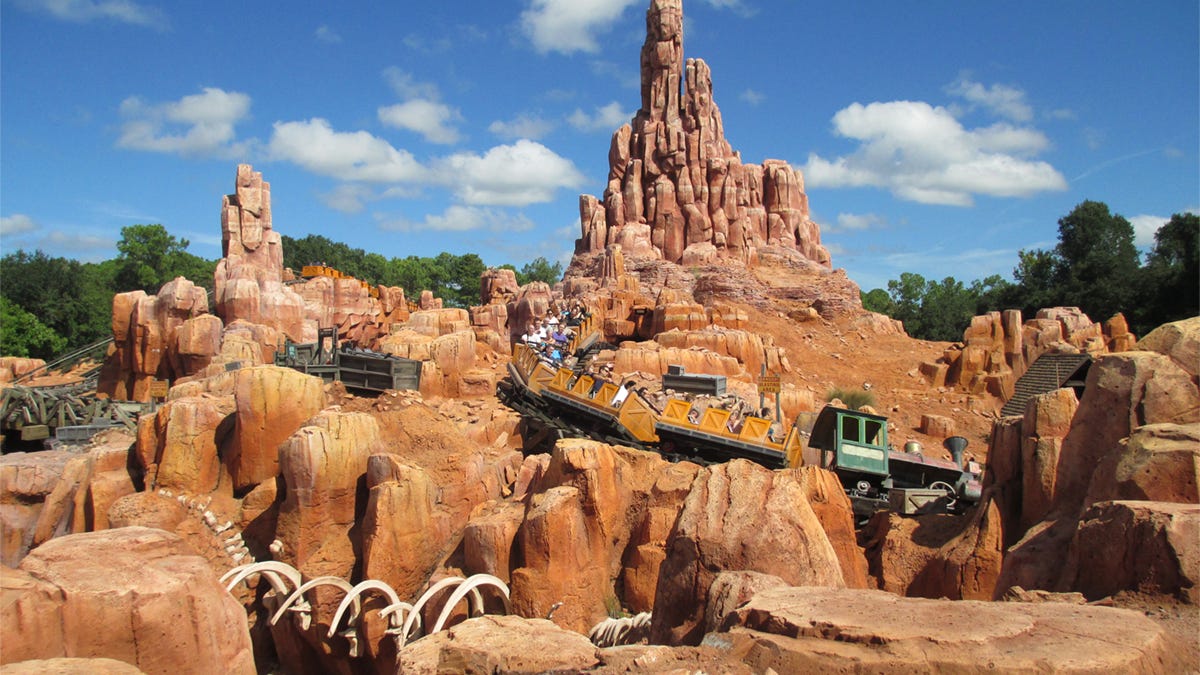Researchers put urine in a backpack, ride roller coaster for science
Weeeeee!!! Scientists test their theory that riding a roller coaster can help dislodge kidney stones.
The Magic Kingdom Park's Big Thunder Mountain Railroad is currently closed for upgrade, due to reopen in November.
Amaryllis GardenerIf you've ridden Magic Kingdom Park's Big Thunder Mountain Railroad roller coaster in Orlando, Florida recently, you may have been whizzing around with a backpack full of pee. But don't get pissed off -- it was all for a good cause.
Researchers from Michigan State University College of Osteopathic Medicine conducted the unconventional experiment to find out if anecdotal reports about the healing effects of roller coasters are valid. Namely, that riding a coaster can help with the passage of kidney stones.
To test the hypothesis, study leader David D. Wartinger and co-author Marc A. Mitchell decided to model the experience of a particular patient, who claimed to have passed three kidney stones, one for each of three consecutive rides on the Big Thunder Mountain Railroad.
They used 3D printing to build a model of the kidney from clear silicone. They then filled the kidney with pee and put three kidney stones of differing sizes in the upper, middle and lower passages of the kidney. They put the kidney in a special backpack and, with the permission of the park, rode the roller coaster 20 times.
If you have a small kidney stone, well, urine luck.
They then evaluated the effect of the rides on each of the three stones, and found that it's not just the roller coaster, but where you sit in it that matters. Independent of kidney stone size and location, sitting at the front of the 'coaster resulted in a 16.67 percent passage rate. Sitting in the back was the golden zone, resulting in a passage rate of 63.89 percent. And it can't be too hardcore a coaster, either -- too fast and the G-force pins the kidney stones, preventing them from moving.
"Preliminary study findings support the anecdotal evidence that a ride on a moderate-intensity roller coaster could benefit some patients with small kidney stones," Wartinger said in a statement.
"Passing a kidney stone before it reaches an obstructive size can prevent surgeries and emergency room visits. Roller coaster riding after treatments like lithotripsy and before planned pregnancies may prevent stone enlargement and the complications of ureteral obstruction."
The team hopes that the roller coaster treatment could help reduce invasive treatments for kidney stones, which affect over 300,000 people in the US annually, and costs around $2.1 billion.
"The osteopathic philosophy of medicine emphasizes prevention and the body's natural ability to heal," Wartinger said. "What could be more osteopathic than finding a relatively low-cost, non-invasive treatment that could prevent suffering for hundreds of thousands of patients?"
It's a great idea, but we sure hope those researchers mind their pees in queues.


